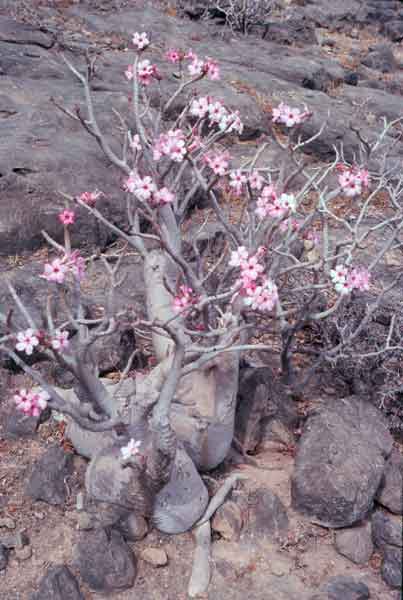The Archaeology Fund
South Arabia
|
Our approach to understanding Southern Arabia from an ecological point of view hinges on the distribution of Frankincense and Myrrh. These two world famous products have peaked the curiosity of countless generations. A great deal of misinformation has originated about these two succulents, stemming primarily from a desire to keep their location and products secret. This is understandable in light of the great economic profitability of the plants both in the past and present. Recent advances in our ability to explore Southern Arabia, both on the ground and from space have greatly improved our knowledge of the entire region as well as the remarkable flora to be found there. Southern Arabia appears to be an ecological extension of both the island of Socotra as well as the northern Horn of Africa. The key to understanding the ecosystems of this region lies in the Southwest Monsoon phenomenon. A number of researchers have shown that the Southwest Monsoon, which originates off the southeast coast of Africa, moves steadily northward during late spring and early summer. Today, this monsoon strikes the central southern Arabian coast at approximately the first of June and dissipates by the first week in September. This phenomenon creates temperature inversion, cloud insolation, persistent gentle rainfall and high velocity winds. Currently such a rainfall pattern is restricted to the coastal regions of Southern Arabia and in the front ranges of the Yemen and Oman scarps. Its effects however flow northward to the edges of the Rub al Khali desert. The flora of the region responds to this climactic phenomenon primarily in the form of a vast number of succulents. Among these are both Frankincense and Myrrh. The highest quality of such plants is to be found in the rain shadow behind the scarps themselves. They therefore occur as a microenvironment stretching for less than 500 kilometers across Oman and Yemen. A cross section of these microenvironments produces startling changes from the coast to the Empty Quarter in less than 200 kilometers. Detailed climological records both on and off shore have suggested a much stronger monsoonal pattern both in the Quaternary and the early Holocene, perhaps spanning the last 2 million years. To what extent the past distribution of Frankincense and Myrrh is tied to these climitalogical changes remains to be seen. Needless to say, our understanding of the human record in the past is intimately tied to the distribution of this fascinating flora of Southern Arabia, Socotra, and the Horn of Africa. |
|




